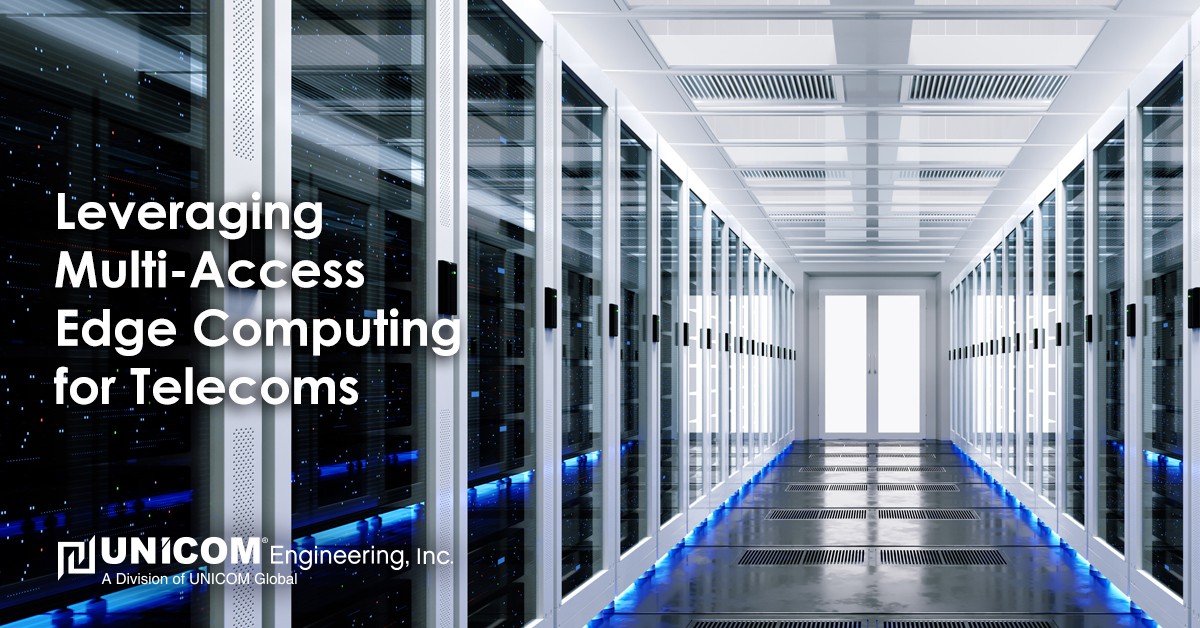Growth is no longer as simple as offering ever-increasing bandwidth for telecom. Today's customers want more. For example, to accommodate mobile users, customers need the computing power of the cloud combined with the low latency of the Edge. In response, many providers plan to offer services that leverage Multi-Access Edge Computing (MEC) and 5G. And to power these technologies, they'll need high-performing servers that comply with the latest O-RAN standards.
Multi Access Edge Computing is a Key to Telecom's Growth
Solution providers are looking to move beyond the cloud to distributed Edge-based computing environments, and telecom providers are creating services to support them. For example, Multi-Access Edge Computing (MEC) enables new computing possibilities every day with use cases like telehealth, gaming, VR/AR, and autonomous cars.
In essence, MEC is the marriage of edge architectures with the high-speed and low latency of 5G to create new telecom services and business models. With faster connectivity, providers can lower their reliance on black-box cloud service providers and deploy hardware to accomplish even more. As a result, they can do more while operating at lower costs than ever.
5G Challenges & Opportunities
With the latency barrier removed, the sky's the limit for the solutions telecom providers can craft. For example, it's long been difficult to deliver quality connectivity to remote customer locations like oil rigs and other distant offices. Today, 5G makes it possible to communicate with and secure these locations as nodes on a WAN.
So, as you can guess, the list of use cases for 5G keeps growing. And as a result, the challenge it presents to providers is twofold: thinking big enough to solve newer problems and creating the architecture to support these solutions.
The Growth of IoT
One specific way cloud and edge deployments are being challenged to grow with IoT proliferation. According to a recent IDC estimate, as many as 41.6 billion connected devices will be in use by 2025. That's because more devices create more data and require more processing. In addition, let's not forget that these devices both create and pull data from servers. Therefore, the lower the latency in either direction, the better.
Ultimately, telecom providers that leverage Edge Computing and 5G will be able to provide the increased throughput, lower latency, security, and location or context-based awareness required by IoT devices.
O-RAN - Facilitating Edge and Cloud Convergence
To answer the needs of IoT and make Multi-Access Edge Computing a reality, the world's leading telecom providers need hardware and architectures that facilitate growth. In short, they need to create edge deployments that can perform like the cloud.
In 2018, AT&T, China Mobile, Deutsche Telekom, and others formed the O-RAN Alliance with the mission of moving the RAN industry toward virtualized and intelligent standards. Since then, Verizon, Dish Network, and other providers have joined the consortium, and together, they've developed architecture standards for edge deployments in their Working Group 6 (WG6) publication.
Among O-RAN recommendations are specifications for power, space, environmental, and safety requirements. These requirements also coincide with the latest NEBS standards.
Meeting the Needs of MEC and O-RAN: the Dell EMC PowerEdge XR11 and XR12
With its PowerEdge XR11 and XR12 rackmount servers, Dell Technologies OEM Solutions satisfies O-RAN requirements in four key areas:
Power - Dell Technologies offers to develop Powers Supply units (DC and AC) from 800W to 1400W that satisfy O-RAN specs and are efficient.
Space - Available in 1U and 2U heights, respectively, the Dell EMC PowerEdge XR11 and XR12 are 19" in width. Their compact size, along with their back and front I/O capabilities, make them ideal for edge cloud racks.
Environmental - The XR11 and XR12 servers have been tested to Maritime and MIL-STD specifications, including vibration, shock, sand or dust, and altitude. Therefore, they're well-equipped to operate in O-RAN Edge Cloud locations.
Safety - The XR11 and XR12 were also designed and tested to the fire resistance, electrical and grounding, and acoustic noise requirements of NEBS and O-RAN.
UNICOM Has the Hardware Expertise to Build it All
Telecom providers, over the years, have perfected the art of increased network performance. As they seek to provide newer, server-based offerings, however, they should leverage the expertise of experienced integrators. That way, they can keep pace with their competition instead of waiting to build with in-house capabilities.
When you work with UNICOM Engineering to build your next edge deployment, we become an extension of your team, listening to your needs and protecting your brand with every system that leaves our dock. Our agile team is committed to making the imaginable possible as we adjust to needs and demands in every phase of our partnership and your business. As a Dell Technologies Titanium OEM Partner, we are ready to power your solutions with their industry-leading portfolio, delivering unique solutions with incredible speed and reliability. To learn more about how we can help you drive your edge solution to market faster, watch our Why Build on Dell Video or visit our website to schedule a consultation today.
